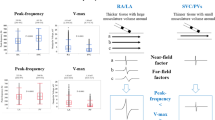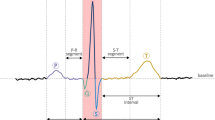Abstract
This brief review is focused on 12-lead Holter electrocardiogram (ECG) recording including a review of the literature and the description of the advantages of its application. The standard 12-lead ECG provides a bedside snapshot of the electrical activity of the heart including vector information, but a snapshot of a few beats for some seconds might miss the whole story. Traditional Holter ECG displaying two or three leads may record all heart beats during a prolonged period, but the limited vector information might be a cause of shortcomings in the ECG diagnosis. The 12-lead Holter ECG overcomes these disadvantages and should be preferred for detecting episodes of arrhythmias, localize their origin or the localization of myocardial ischemia. The 12-lead Holter ECG monitoring is efficient in the evaluation of the effect of drugs or interventional therapeutic procedures, i.e., efficiency of biventricular pacing in patients with heart failure and permanent atrial fibrillation (AF). The automatic analysis of parameters in 12-lead Holter ECG is also providing information for risk stratification. In order to obtain a precise diagnosis based on the criteria established on standard ECG, the “real” 12-lead ECG with ten electrodes is advocated.
Zusammenfassung
Dieser Artikel faßt die Literatur zum Thema 12-Kanal-Langzeit-EKG zusammen und beschreibt die Vorteile der Anwendung. Das 12-Kanal-Stand-EKG ermöglicht eine Momentaufnahme der elektrischen Aktivität des Herzens einschließlich der vektoriellen Information, aber ein zeitlich befristeter Schnappschuß repräsentiert die klinischen Probleme häufig nicht ausreichend. Das traditionelle Langzeit-EKG mit zwei oder drei Ableitungen zeichnet lückenlos den Herzrhythmus auf, Lokalisation einer Arrhythmie oder Ischämie lassen sich jedoch nicht zuordnen. Das 12-Kanal-Langzeit-EKG bietet diese Informationen und ist bei der Evaluation medikamentöser Therapien oder bei Überprüfung therapeutischer Interventionen, z. B. Effektivität biventrikulärer Stimulation bei Patienten mit permanentem Vorhofflimmern, zu bevorzugen. Darüber hinaus verbessert die automatische Analyse des 12-Kanal-Langzeit-EKG auch die Risikostratifizierung des plötzlichen Herztodes. Im Hinblick auf eine präzise Diagnose, etablierte EKG-Kriterien miteinbeziehend, ist dem mit 10 Elektroden abgeleiteten „echten“ 12-Kanal-EKG der Vorzug vor den mit weniger Elektroden abgeleiteten, errechneten Varianten zu geben.

Similar content being viewed by others
References
Kligfield P, Gettes LS, Bailey JJ et al (2007) Recommendations for the standardization and interpretation of the electrocardiogram. Part I: the electrocardiogram and its technology. Circulation 115:1306–1324
Pelter MM, Kozik TM, Loranger DL (2012). A research method for detecting transient myocardial ischemia in patients with suspected acute coronary syndrome using continuous ST-segment analysis. J Vis Exp 70:pii: 50124. doi:10.3791/50124
Carey MG, Thevenin BJ (2009) High-resolution 12-lead electrocardiograms of on-duty professional firefighters: a pilot feasibility study. J Cardiovasc Nurs 24:261–267
Mason RE, Likar I (1966) A new system of multiple-lead exercise electrocardiography. Am Heart J 71:196
Pahlm O, Haisty WK Jr, Edenbrandt L (1992) Evaluation of changes in standard electrocardiographic QRS waveforms recorded from activitycompatible proximal limb lead positions. Am J Cardiol 69:253–257
Arya A, Huo Y, Frogner F et al (2011) Effect of limb lead electrodes location on ECG and localization of idiopathic outflow tracttachycardia: a prospective study. J Cardiovasc Electrophysiol 22:886–891
Welinder A, Wagner GS, Maynard C et al (2010) Differences in QRS axis measurements, classification of inferior myocardial infarction, and noise tolerance for 12-lead electrocardiograms acquired from monitoring electrode positions compared to standard locations. Am J Cardiol 106:581–586
Man SC, Maan AC, Kim E et al (2008) Reconstruction of standard 12-lead electrocardiograms from 12-lead electrocardiograms recorded with the Mason-Likar electrode configuration. J Electrocardiol 41:211–219
Wehr G, Peters RJ, Khalifé K et al (2006) A vector-based, 5-electrode, 12-lead monitoring ECG (EASI) is equivalent to conventional 12-leadECG for diagnosis of acute coronary syndromes. J Electrocardiol 39:22–28
Drew BJ, Finlay DD (2008) Standardization of reduced and optimal lead sets for continuous electrocardiogram monitoring: where do we stand? J Electrocardiol 41:458–465
Kadish AH, Buxton AE, Kennedy HL et al (2001) ACC/AHA clinical competence statement on electrocardiography and ambulatoryelectrocardiography: a report of the ACC/AHA/ACP-ASIM task force on clinical competence (ACC/AHA Committee to develop a clinical competence statement on electrocardiography andambulatory electrocardiography) endorsed by the International Society for Holter and noninvasive electrocardiology. Circulation 104:3169–3178
Sejersten M, Pahlm O, Pettersson J et al (2003) The relative accuracies of ECG precordial lead waveforms derived from EASI leads and those acquired from paramedic applied standard leads. J Electrocardiol 36:179–185
Emmel M, Sreeram N, Schickendantz S et al (2006) Experience with an ambulatory 12-lead Holter recording system for evaluation of pediatric dysrhythmias. J Electrocardiol 39:188–193
Kolb C, Nürnberger S, Ndrepepa G et al (2001) Modes of initiation of paroxysmal atrial fibrillation from analysis of spontaneously occurring episodes using a 12-lead Holter monitoring system. Am J Cardiol 88:853–857
Ban JE, Park HC, Park JS et al (2013) Electrocardiographic and electrophysiological characteristics of premature ventricular complexes associated with left ventricular dysfunction in patients without structural heart disease. Europace 15:735–741
Lakkireddy D, Di Biase L, Ryschon K et al (2012) Radiofrequency ablation of premature ventricular ectopy improves the efficacy of cardiac resynchronization therapy in nonresponders. J Am Coll Cardiol 60:1531–1539
Gottlieb SO, Weisfeldt MD, Ouyang P et al (1986) Silent ischemia as a marker for early unfavorable outcomes in patients with unstable angina. N Engl J Med 314:1214–1219
Nademanee K, Intarachot V, Josephson MA et al (1987) Prognostic significance of silent myocardial ischemia in patients with unstable angina. J Am Coll Cardiol 10:1–9
Cohn PF, Fox KM, Daly C (2003) Silent myocardial ischemia. Circulation 108:1263–1277
Krucoff MW (1988) Poor performance of leads V5 in single- and dualchannel ST-segment monitoring during coronary occlusion. J Electrocardiogram 21:530–534
Mirvis DM, Berson AS, Goldberger AL et al (1989) Instrumentation and practice standards for electrographic monitoring in special care units. A report for health professionals by a Task Force of the Council on Clinical Cardiology, American Heart Association. Circulation 79:464–471
Thompson RC, Mackey DC, Lane GE et al (1995) Improved detection of silent cardiac ischemia with a 12-lead portable microprocessor-driven real-time electrocardiographic monitor. Mayo Clin Proc 70:434–442
Drew BJ, Adams MG, Pelter MM et al (1997) Comparison of standard and derived 12-lead electrocardiograms for diagnosis of coronary angioplasty-induced myocardial ischemia. Am J Cardiol 79:639–644
Rautaharju PM, Zhou SH, Hancock EW et al (2002) Comparability of 12-lead ECGs derived from EASI leads with standard 12-lead ECGS in the classification of acute myocardial ischemia and old myocardial infarction. J Electrocardiol 35 Suppl:35–39
Nelwan SP, Crater SW, Meij SH et al (2004) Simultaneous comparison of three derived 12-lead ECGs with standard ECG at rest and during percutaneous coronary occlusion. J Electrocardiol 37 Suppl:171–172
Kamath GS, Cotiga D, Koneru JN et al (2009) The utility of 12-lead Holter monitoring in patients with permanent atrial fibrillation for the identification of nonresponders after cardiac resynchronization therapy. J Am Coll Cardiol 53:1050–1055
Majidi M, Kosinski AS, Al-Khatib SM et al (2009) Reperfusion ventricular arrhythmia bursts’ predict larger infarct size despite TIMI 3 flow restorationwith primary angioplasty for anterior ST-elevation myocardial infarction. Eur Heart J 30:757–764
Hansen S, Rasmussen V, Torp-Pedersen C et al (2008) QT intervals and QT dispersion determined from a 12-lead 24-hour Holter recording in patients with coronary artery disease and patients with heart failure. Ann Noninvasive Electrocardiol 13:22–30
Molnar J, Ranade V, Cvetanovic I et al (2006) Evaluation of 12-lead digital Holter system for 24-hour QT interval assessment. Cardiology 106:224–232
Conflict of interest.
The authors declare that they have no conflict of interest.
Author information
Authors and Affiliations
Corresponding author
Rights and permissions
About this article
Cite this article
Su, L., Borov, S. & Zrenner, B. 12-lead Holter electrocardiography. Herzschr Elektrophys 24, 92–96 (2013). https://doi.org/10.1007/s00399-013-0268-4
Received:
Accepted:
Published:
Issue Date:
DOI: https://doi.org/10.1007/s00399-013-0268-4




